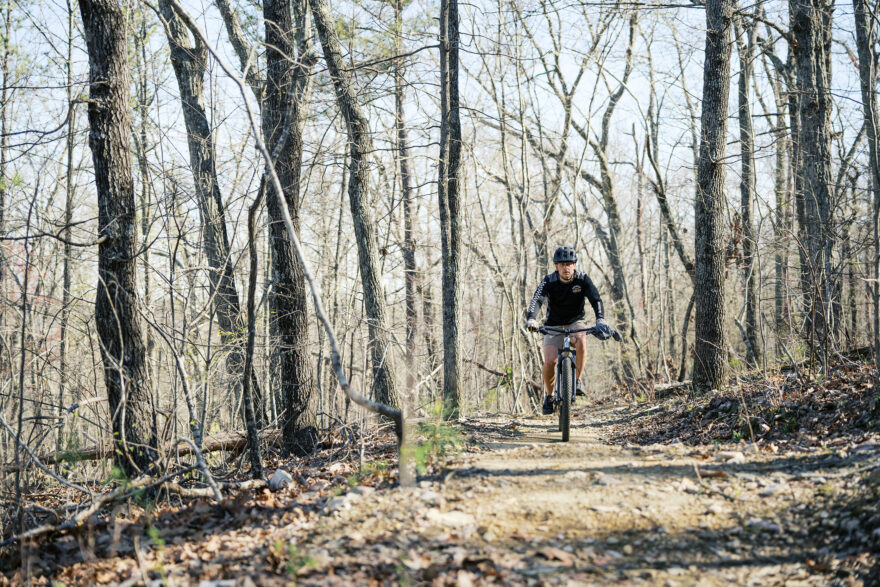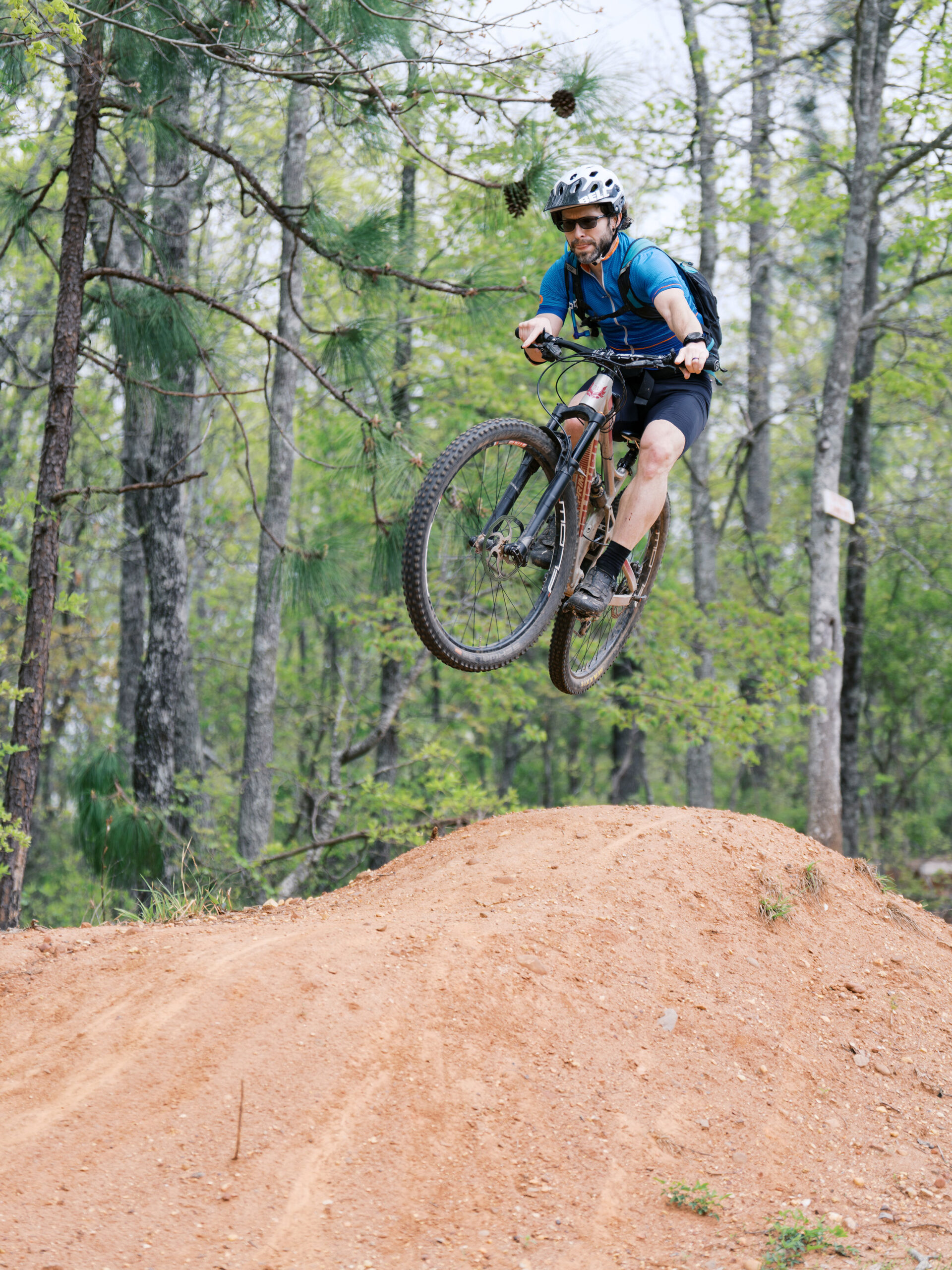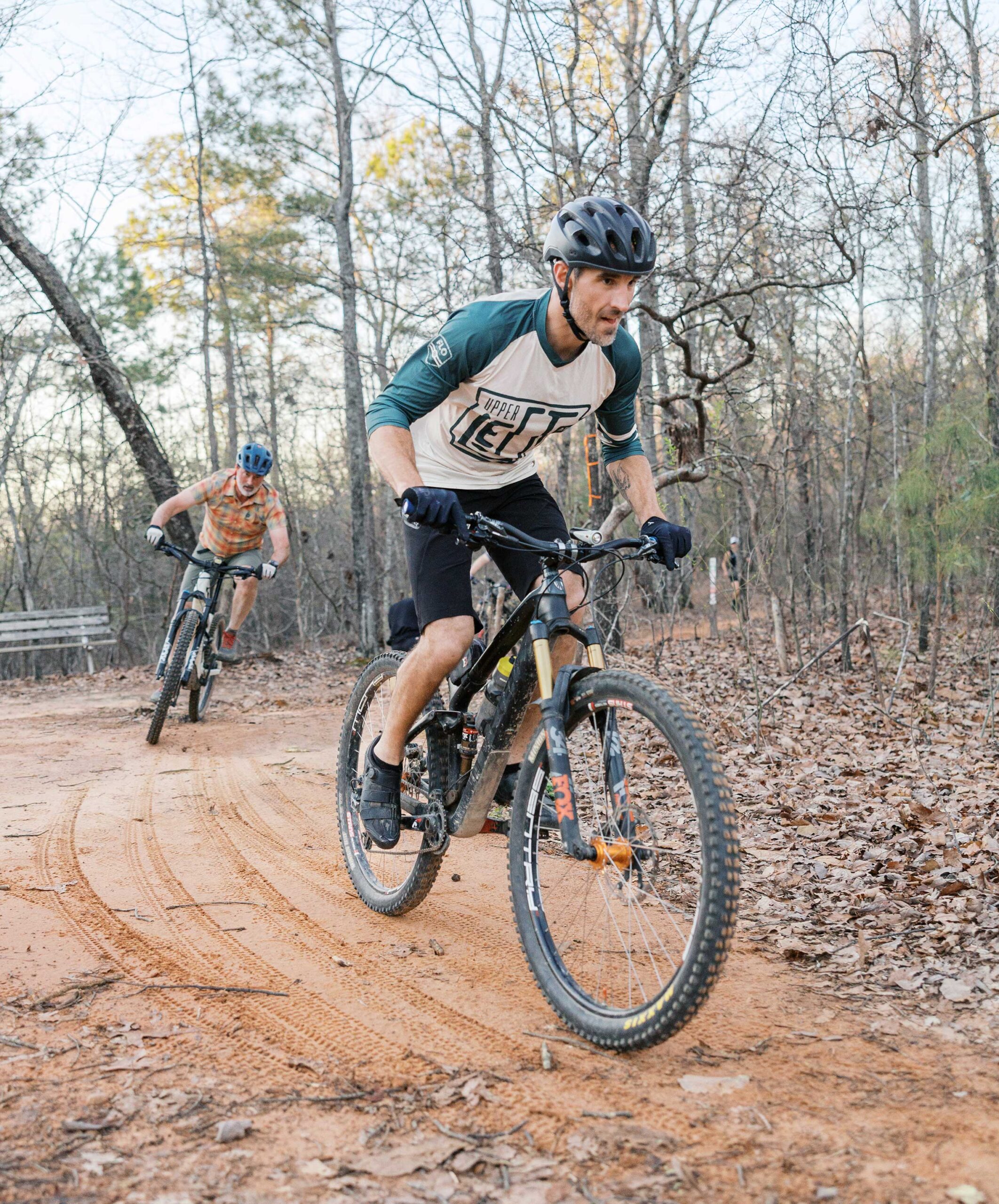
Image via Life Time
Trust for Public Land has released a detailed 40-page report showing the significant economic impacts of mountain biking on communities across the United States.
The nonprofit outdoor advocacy group found that new and expanded trail systems can lead to employment and business development opportunities in multiple industries. In addition to the direct employment in the recreation industry, opportunities include trail construction and maintenance, manufacturing of bicycles and related gear, accommodations, restaurants, and retail.
The U.S. Bureau of Economic Analysis estimates the national- and state-level employment, compensation, and value add for outdoor recreation activities and the industries that support them. Mountain biking, however, is included in the broader cycling category. So, to understand the economic benefits of mountain biking explicitly, Trust for Public Land reviewed literature on individual destinations, studies of travel expenditures, and surveys of mountain bikers.
Across the studies that the nonprofit looked at, the per-visit spending for overnight mountain biking trips ranged from $103 (Duluth, Minnesota) to $1,107 (Chequamegon, Wisconsin). Spending estimates across all studies vary based on average length of stay, average size of group, and the expenditure categories included in the study.
The total employment supported due to spending by visiting mountain bikers ranged from 1,522 to 1,626 jobs per site, and the total labor income across all studies was worth $50.4 million to $54.1 million.

Image by Emil Loeken, via Life Time
A 2019 study surveyed mountain bike riders to estimate the benefits of mountain biking in the U.S. overall, and it found that the average mountain bike tourist spends about $490 per trip, just under $75 higher than the studies included in this report. However, Trust for Public Land notes that the results may be skewed because of the methodology used.
The report also when into the details about some of the challenges of planning routes in rural communities, as well as some best practices to employ when planning outdoor events. It included recommendations for planners to maximize the economic benefits of mountain biking trails. They are:
- Create a robust, cross-sector collaborative stakeholder process to drive trail development strategies. Residents can help identify public concerns and critical challenges for trail stewardship, natural resource management, workforce housing, and anticipated infrastructure needs such as parking, bathroom facilities, and tourism services.
- Focus on connecting trails to existing assets — a Main Street or business district, other recreational assets, public transportation, or accommodations. A well-connected trail system reduces transportation needs to and from the trailhead, reduces infrastructure needs (like connecting roads), increases outdoor recreation access for residents, facilitates regional marketing and business development opportunities, and increases the likelihood that trail users visit local businesses.
- Identify trail champions. In many communities, trail planning is most successful when driven by an individual or group that tirelessly advocates for their implementation. Trail champions may be local agency staff, volunteers, or residents who believe in the transformative power of outdoor recreation and take responsibility for its creation and stewardship.
- Collect baseline economic data prior to the development of a trail system in order to measure its economic benefits. If considering an investment in outdoor recreation as an economic revitalization strategy, communities should begin by collecting baseline data about economic, demographic, and health conditions.
- Reduce costs by leveraging partnerships, such as by working with professional organizations that are familiar with the legal and regulatory requirements of trail building. Rather than taking on land acquisition costs, some trail organizations work closely with private landowners to gain written permission for trails on their property.
- Be inclusive in trail planning and programming, in order to increase accessibility for outdoor recreation enthusiasts of all ages, ability levels, demographics, and socioeconomic backgrounds. This includes accessible trail design, integrating adaptive mountain biking advocates into community engagement processes, and providing equipment and mentoring for community members new to mountain biking.
- Be mindful about the potential for conflicts within and between new and existing residents, mountain bikers, and other trail users. Making sure that they all have a voice in decision-making can help foster a sense of gratitude, pride, and belonging in their communities.

Image via Life Time
Outdoor recreation has the potential to attract riders, counter trends of population loss, improve physical and mental health outcomes for riders, and increase social connectedness and quality of life in the community.
Mountain biking and other forms of outdoor recreation can offer economic revitalization opportunities in rural communities that have suffered from historical disinvestment in public infrastructure, health, and education.
 Your Privacy Choices
Your Privacy Choices